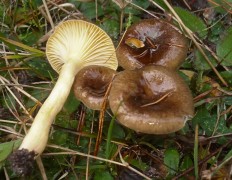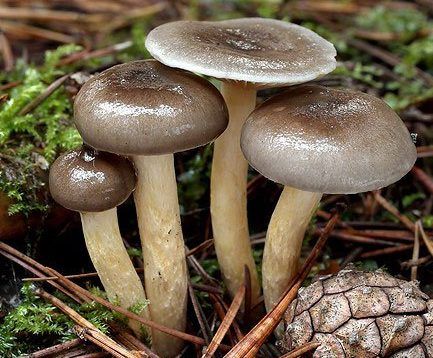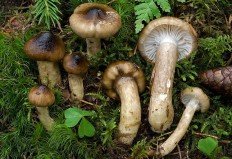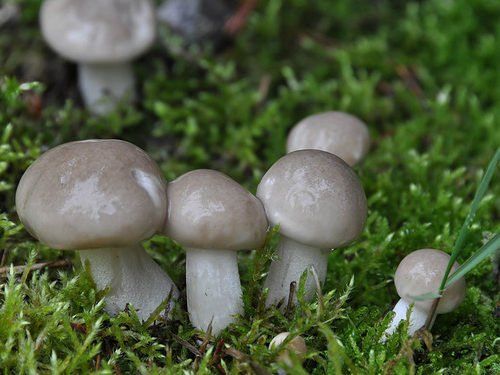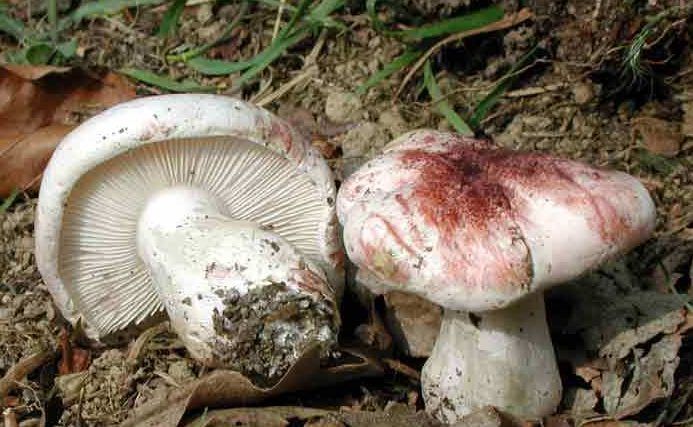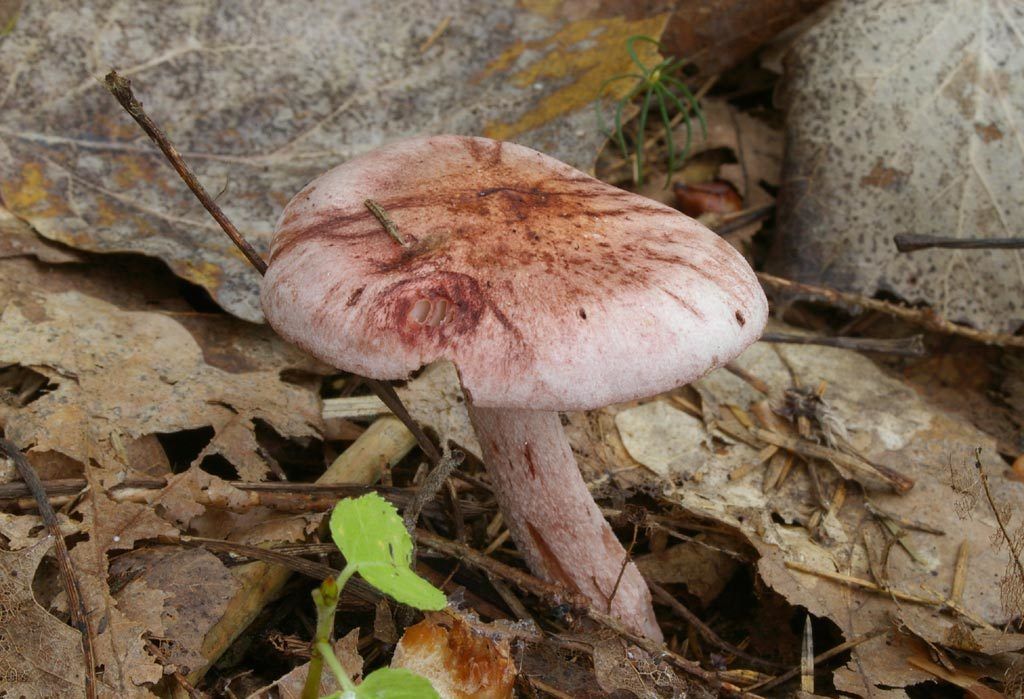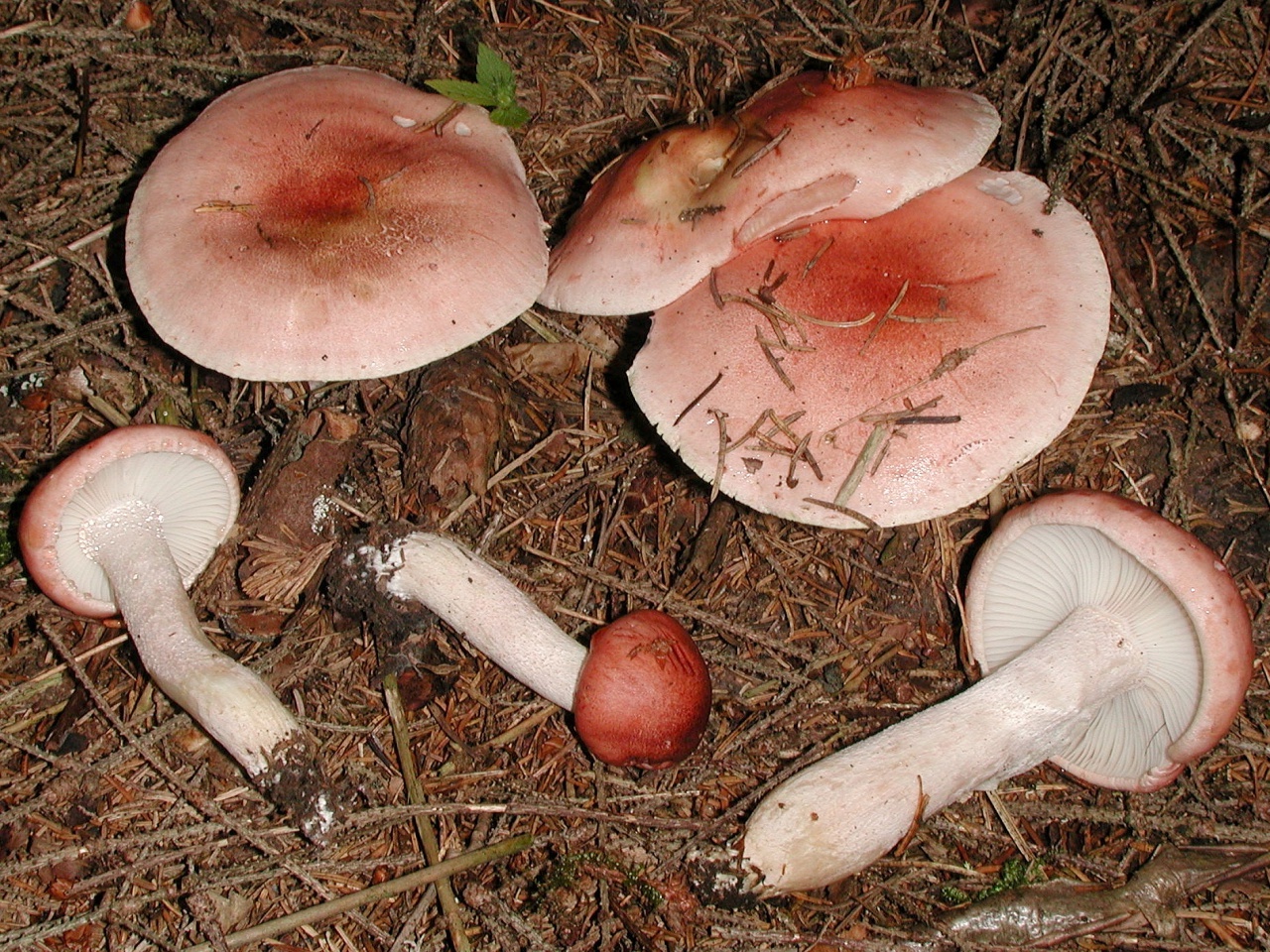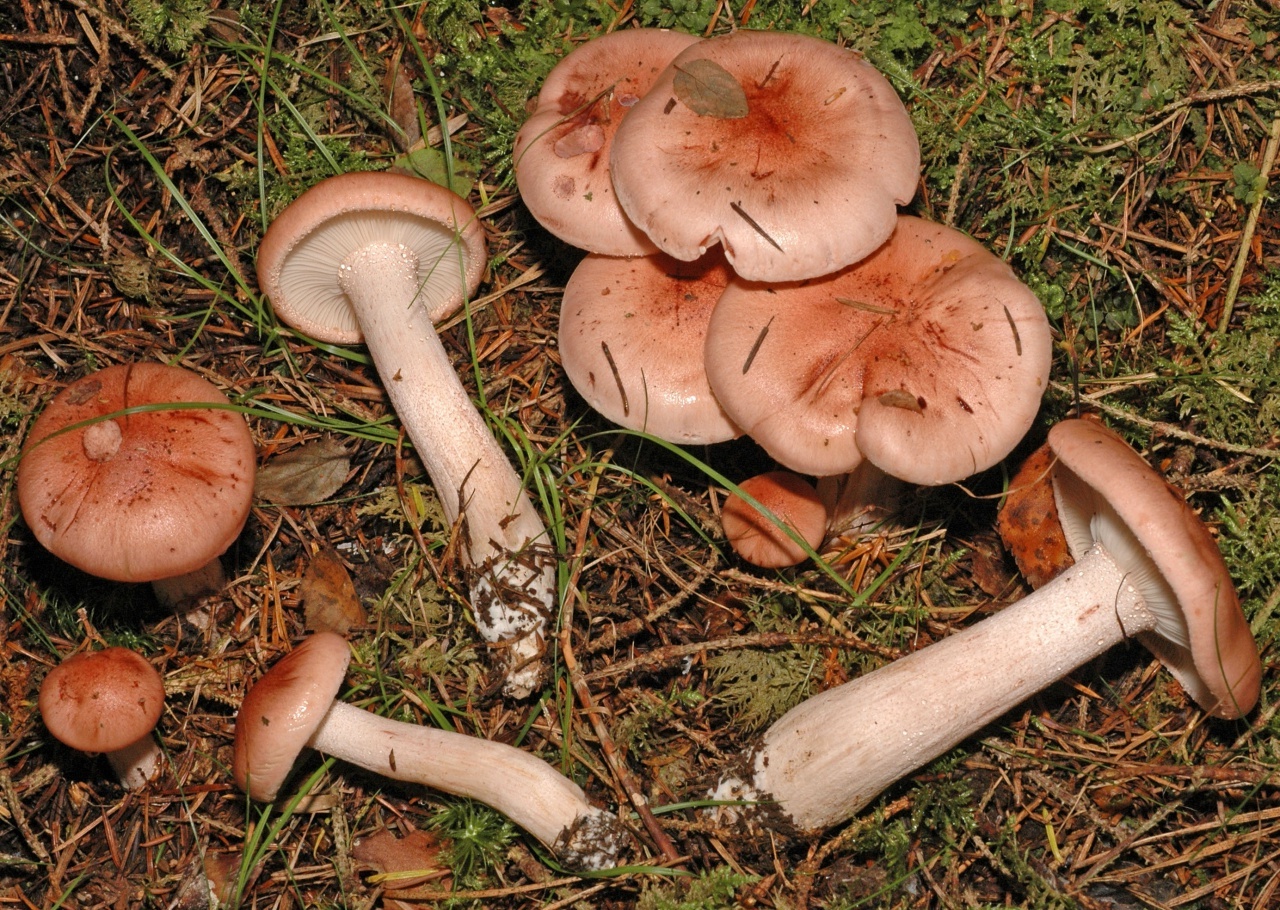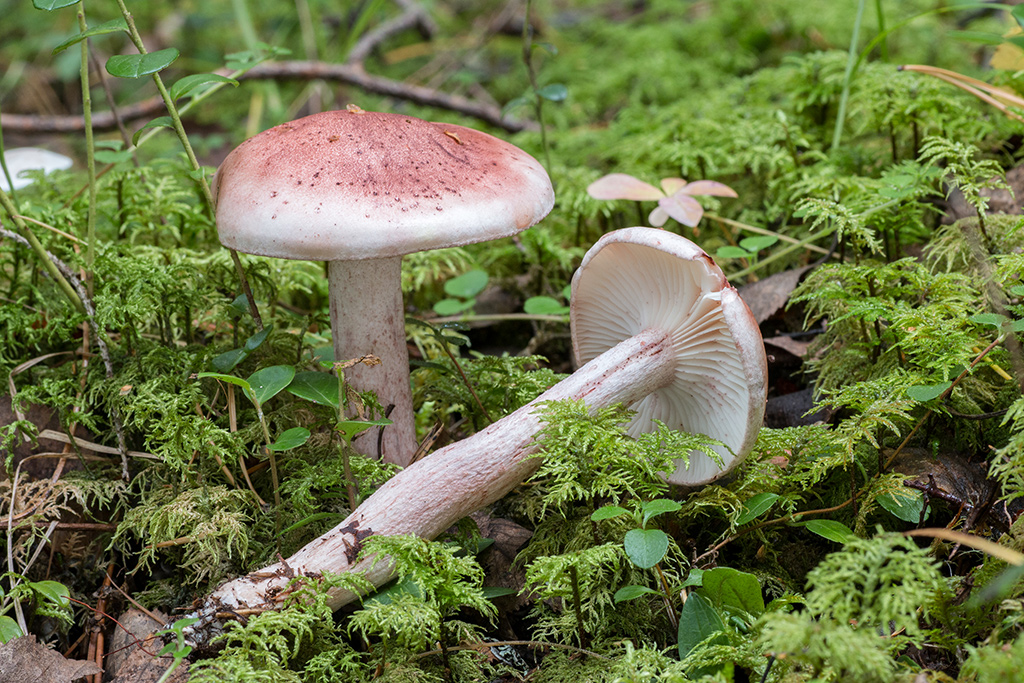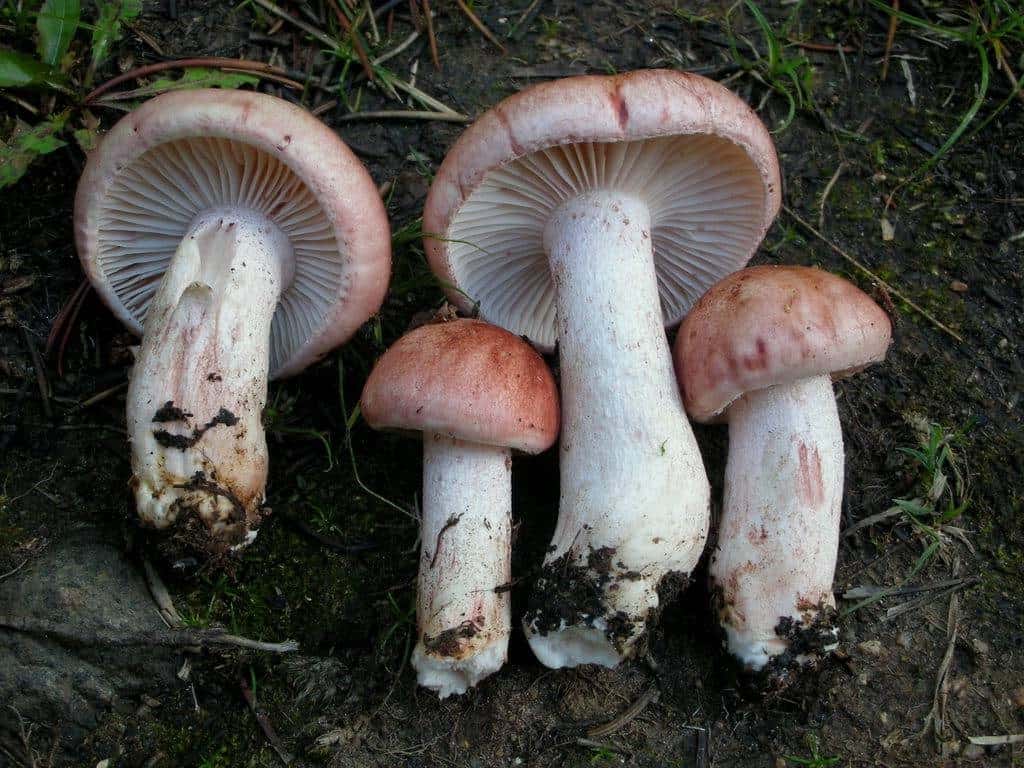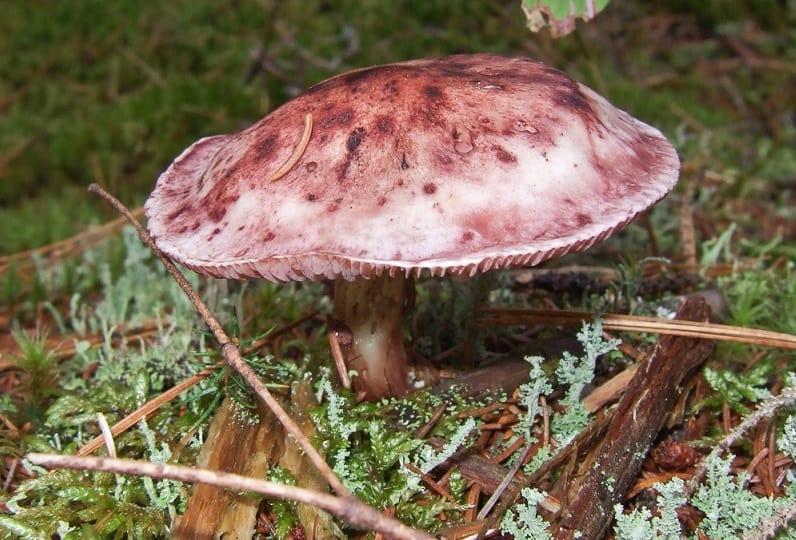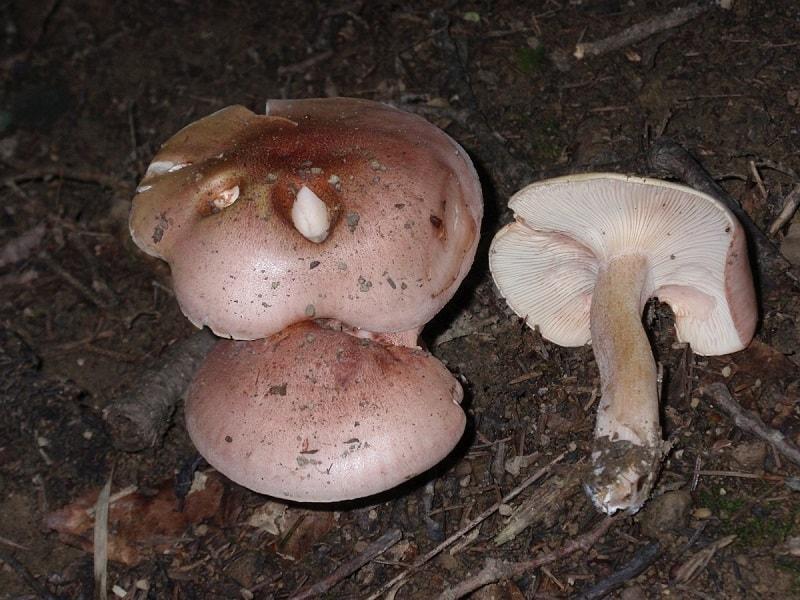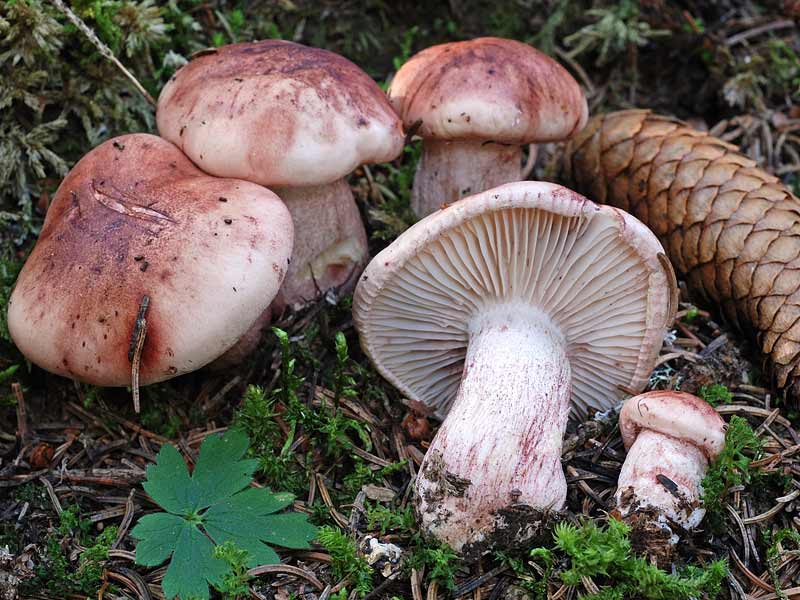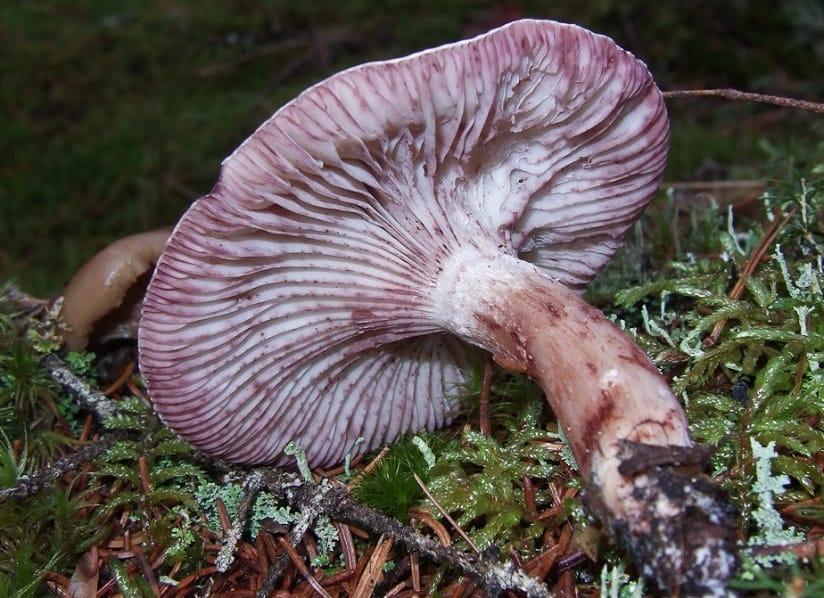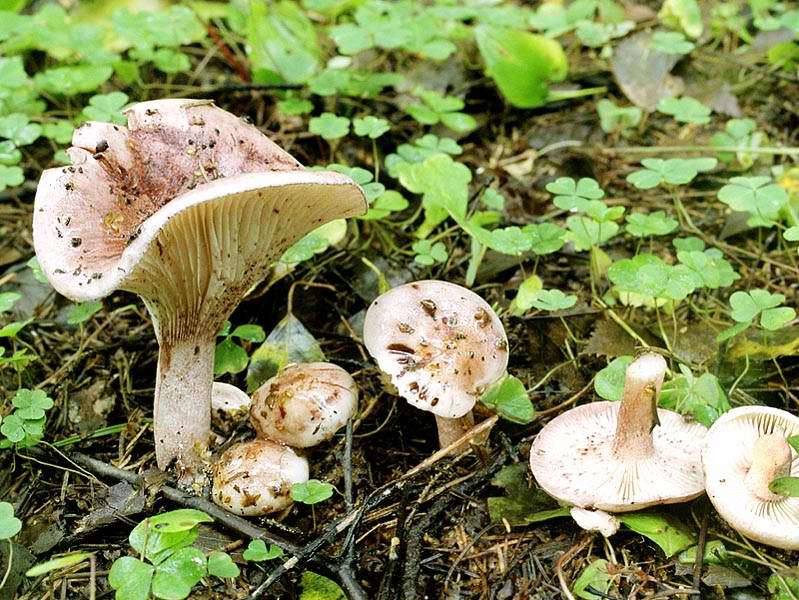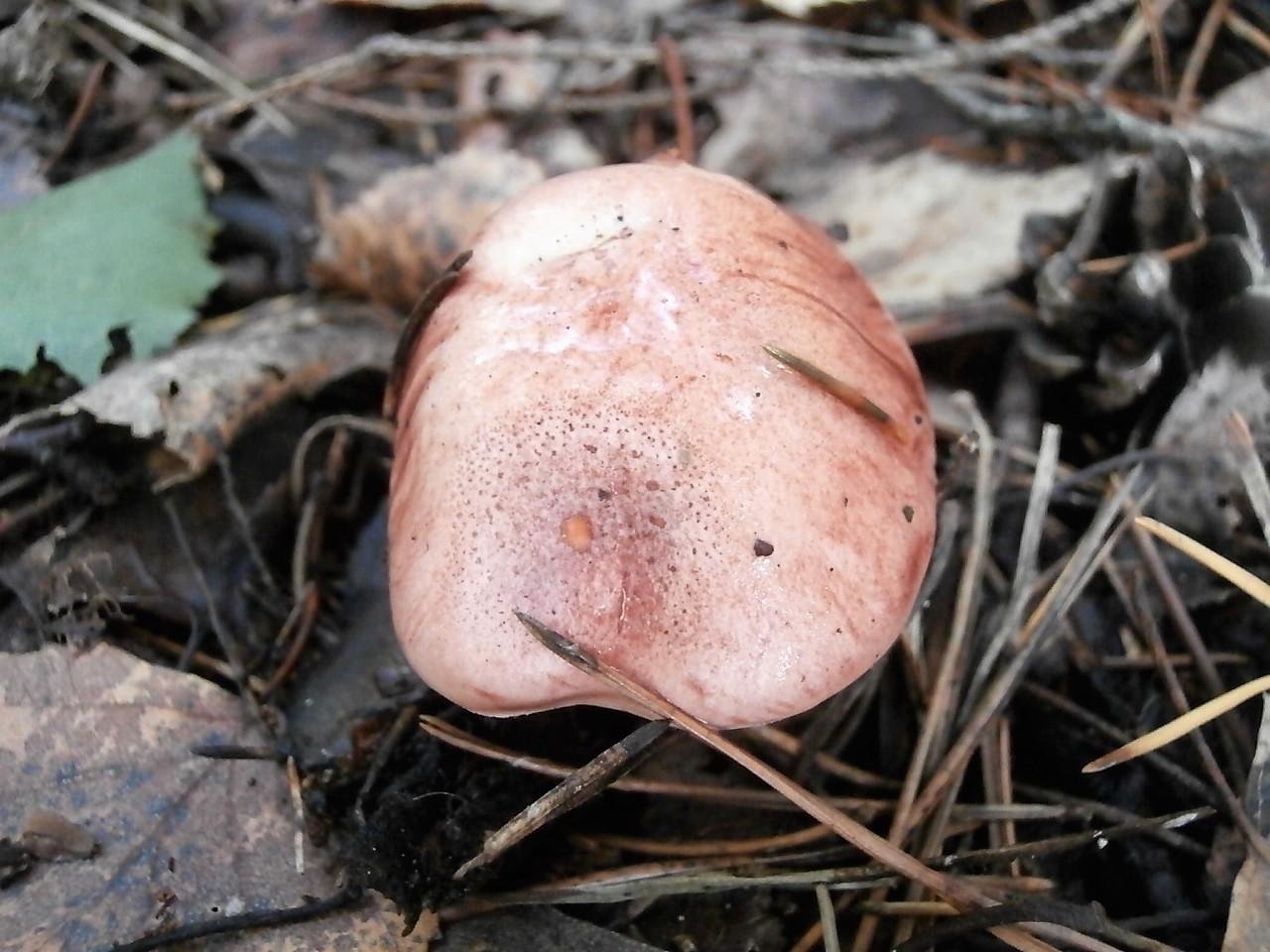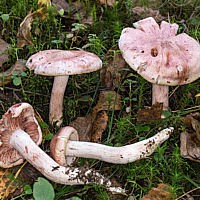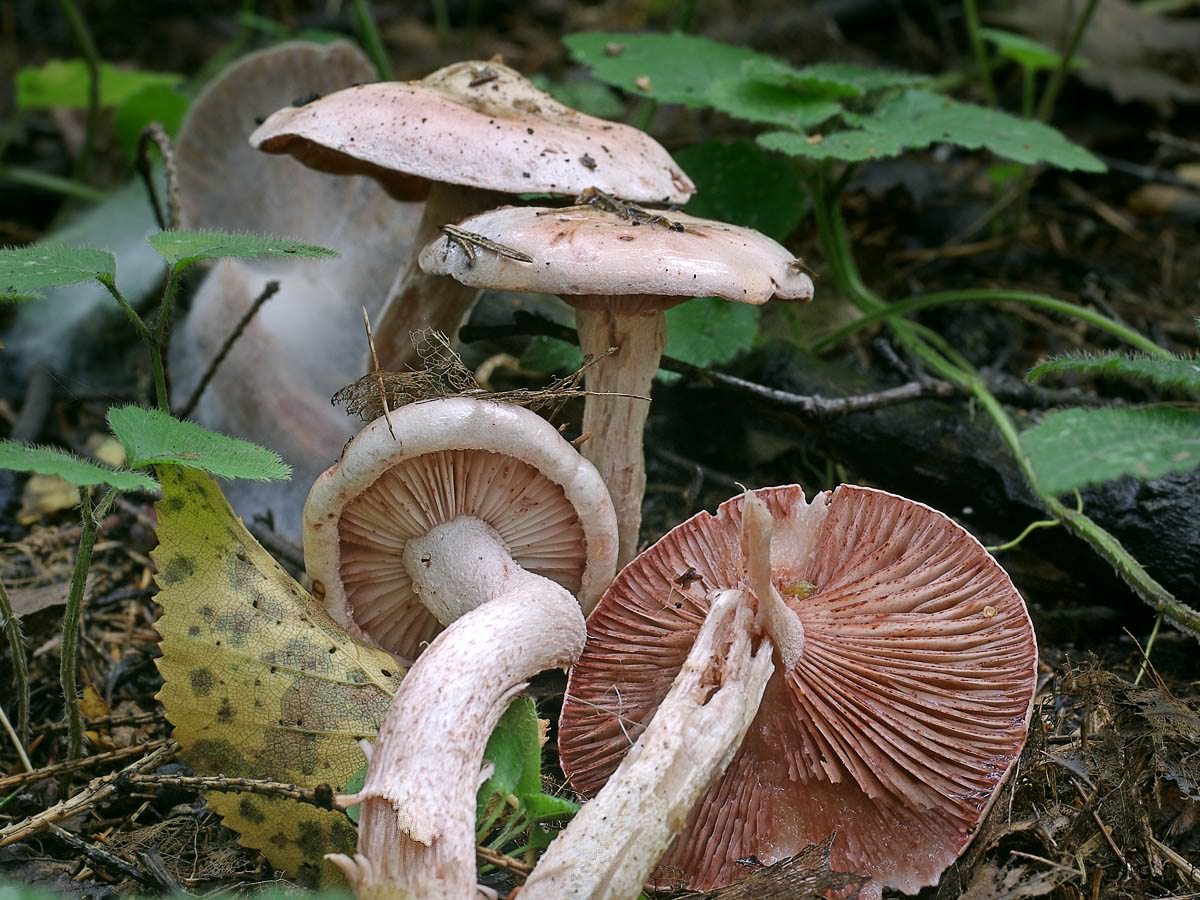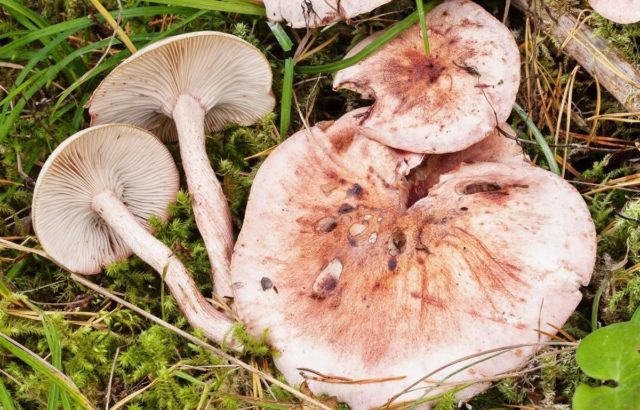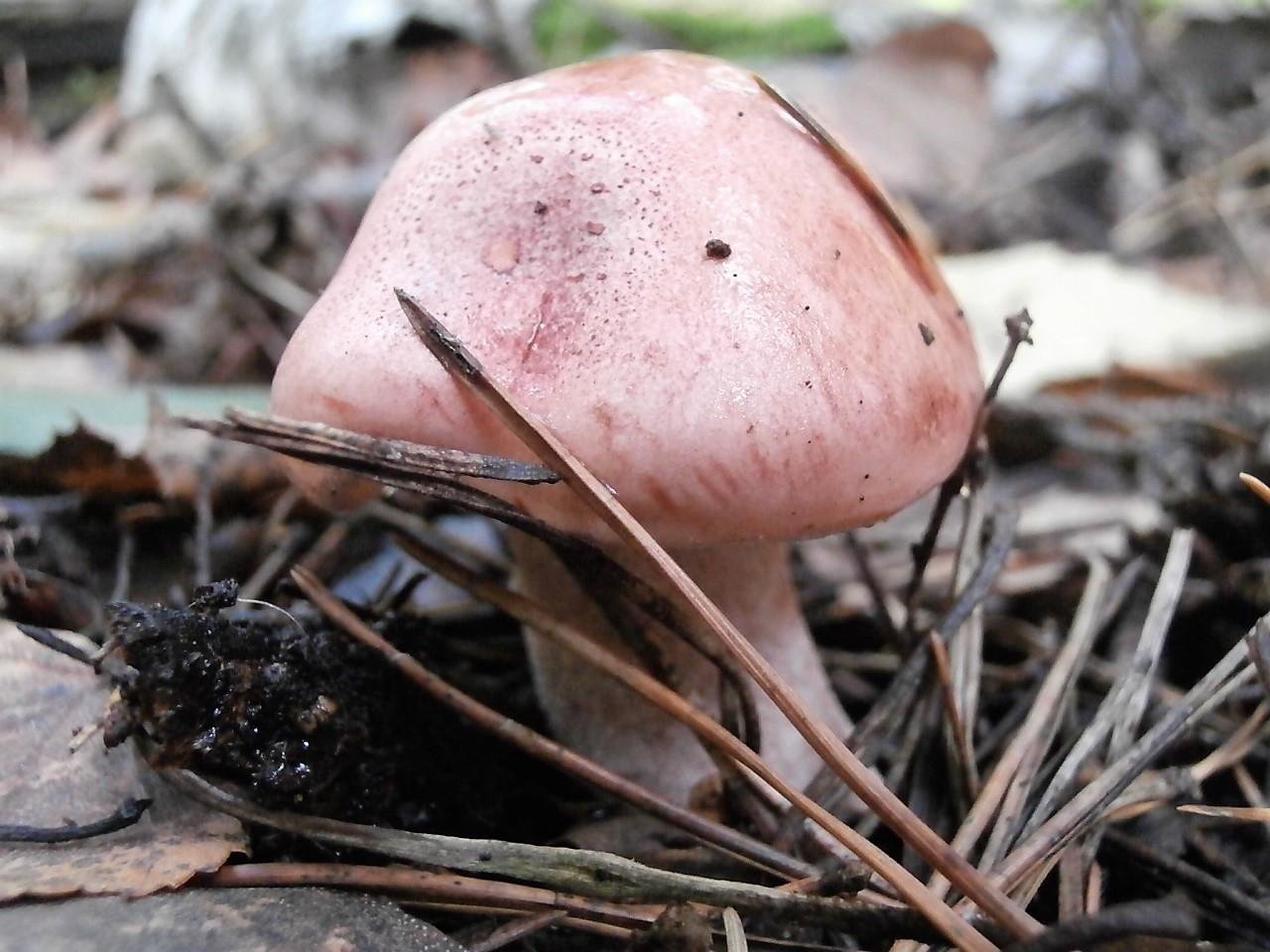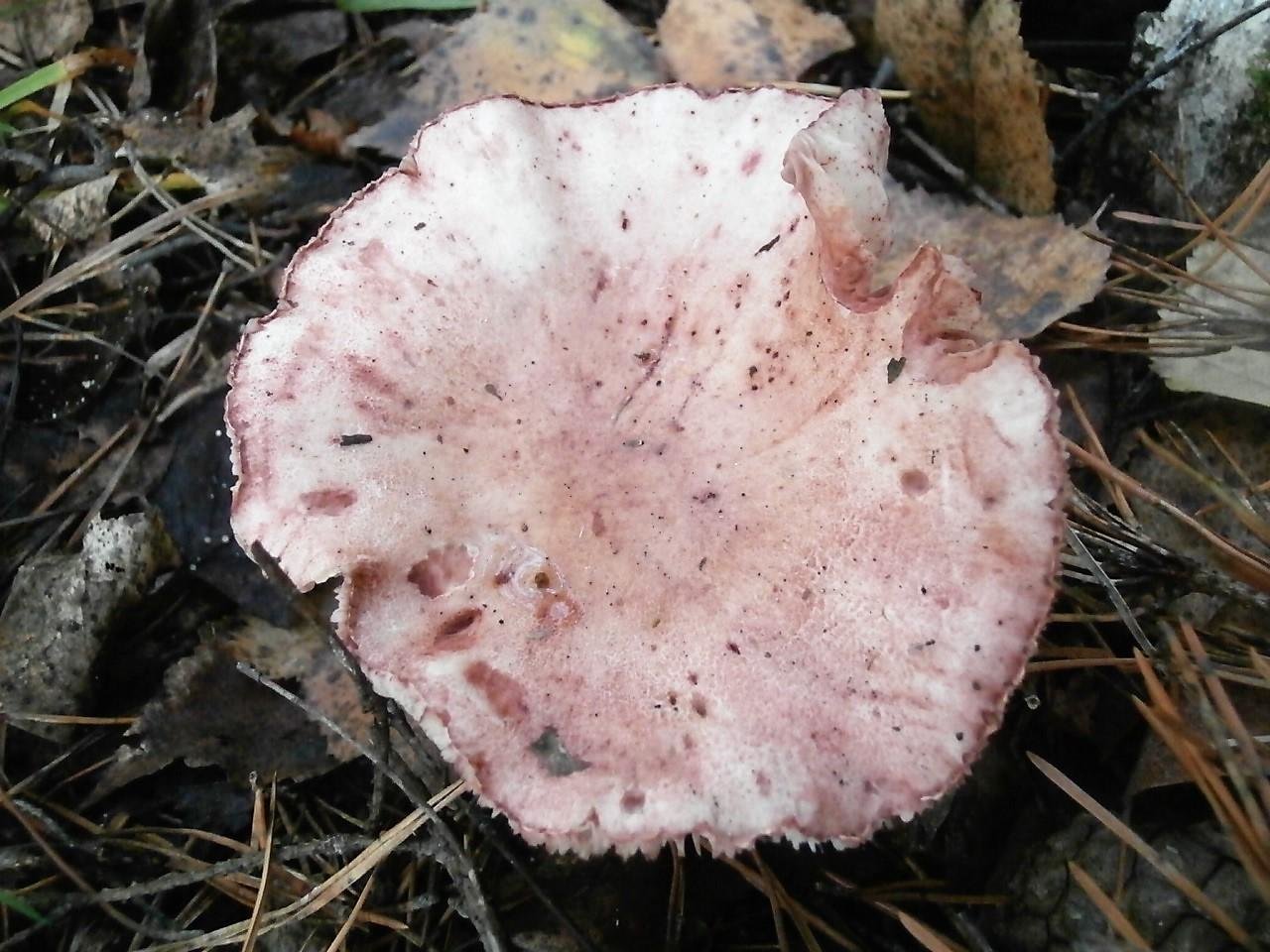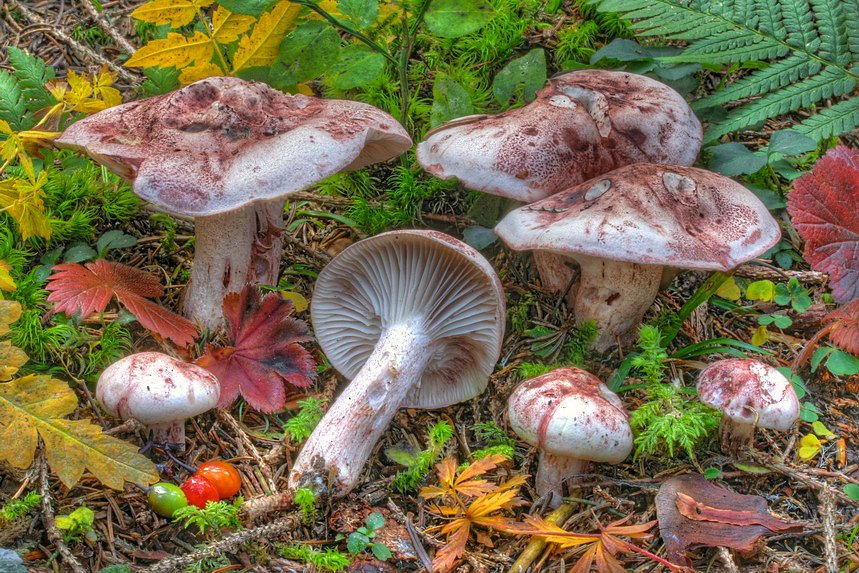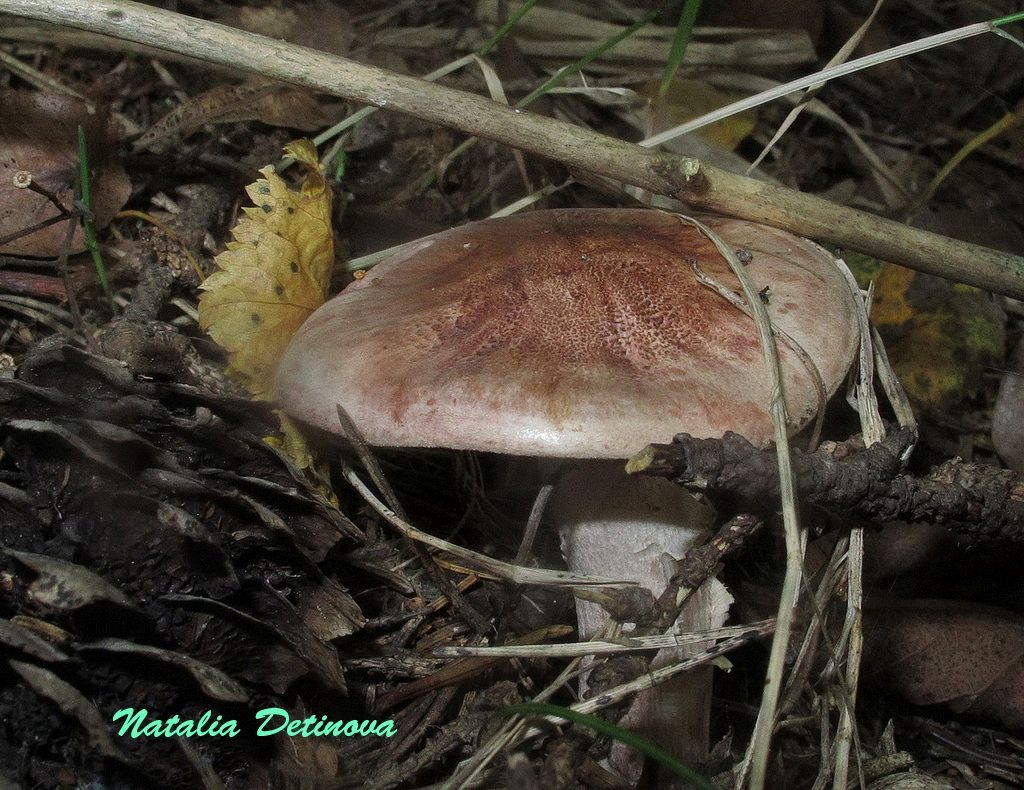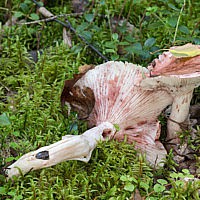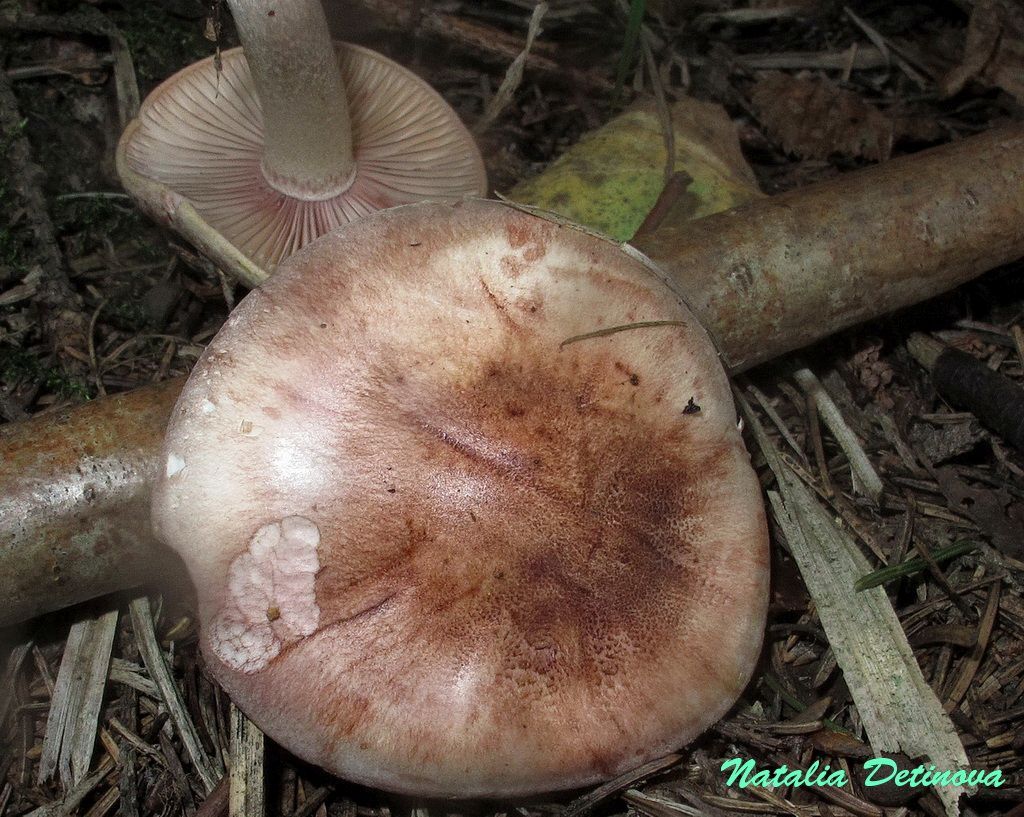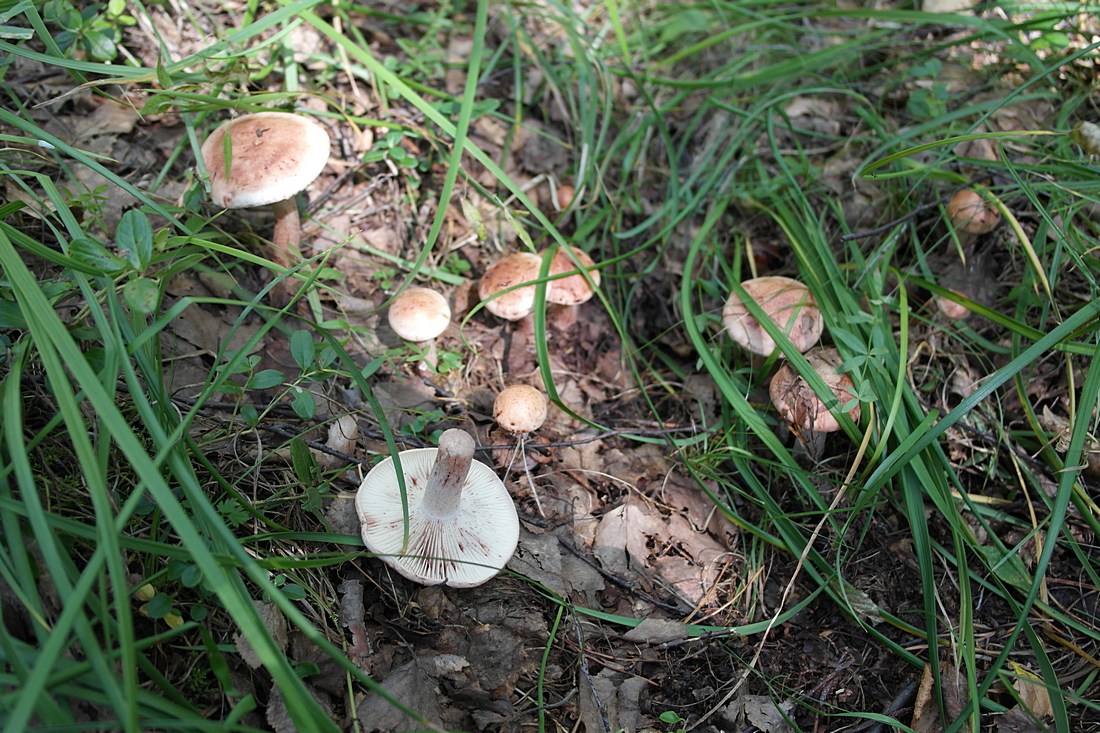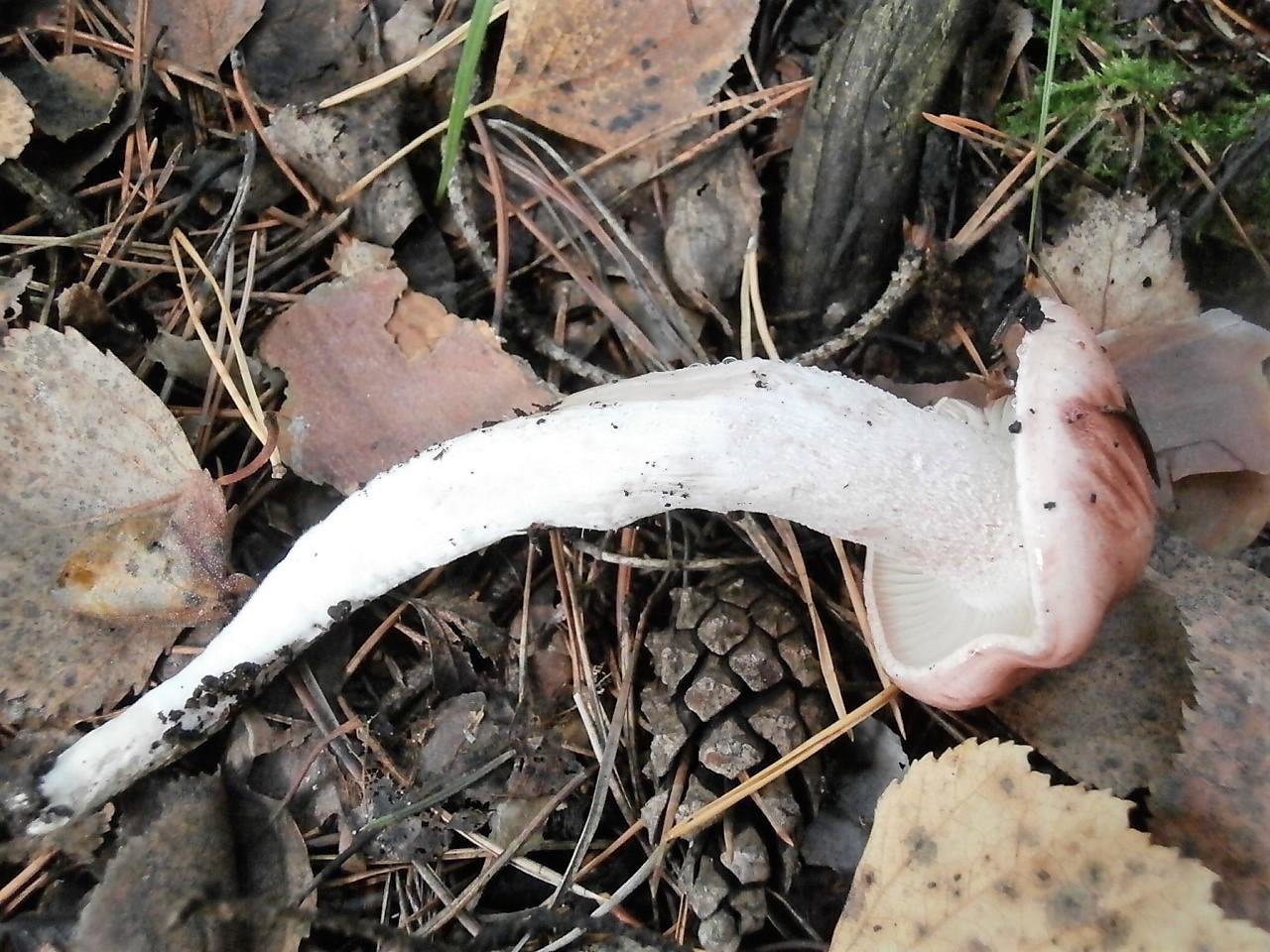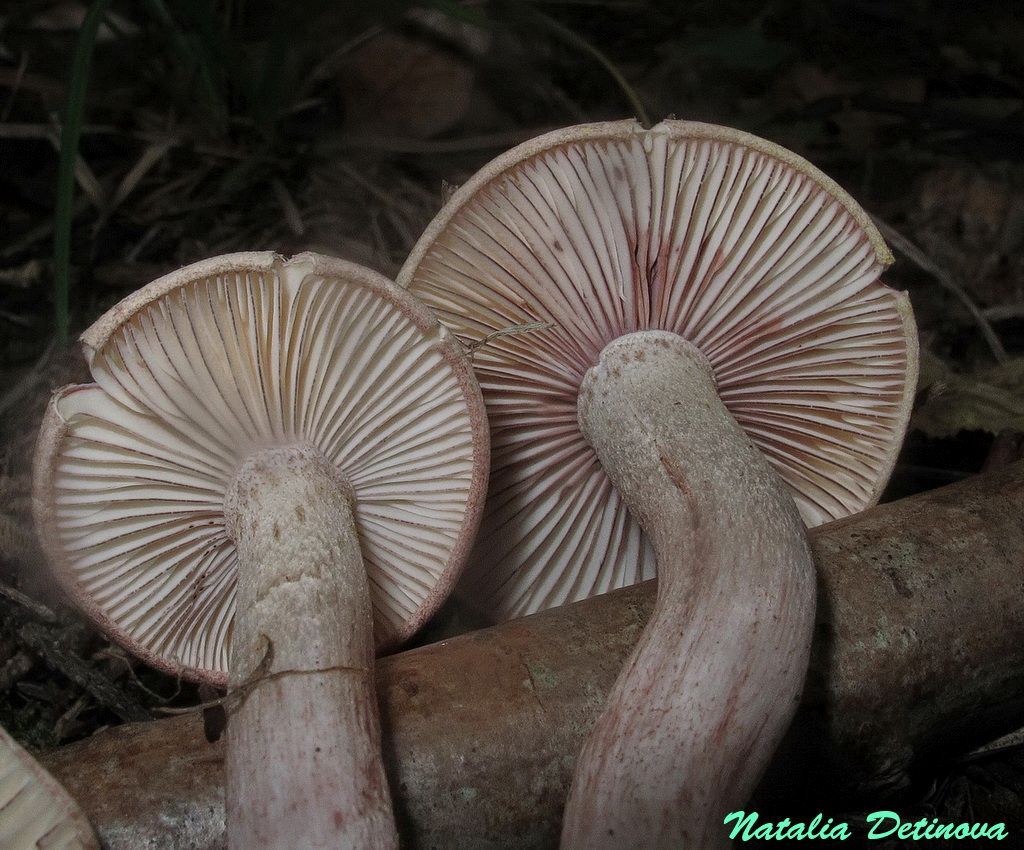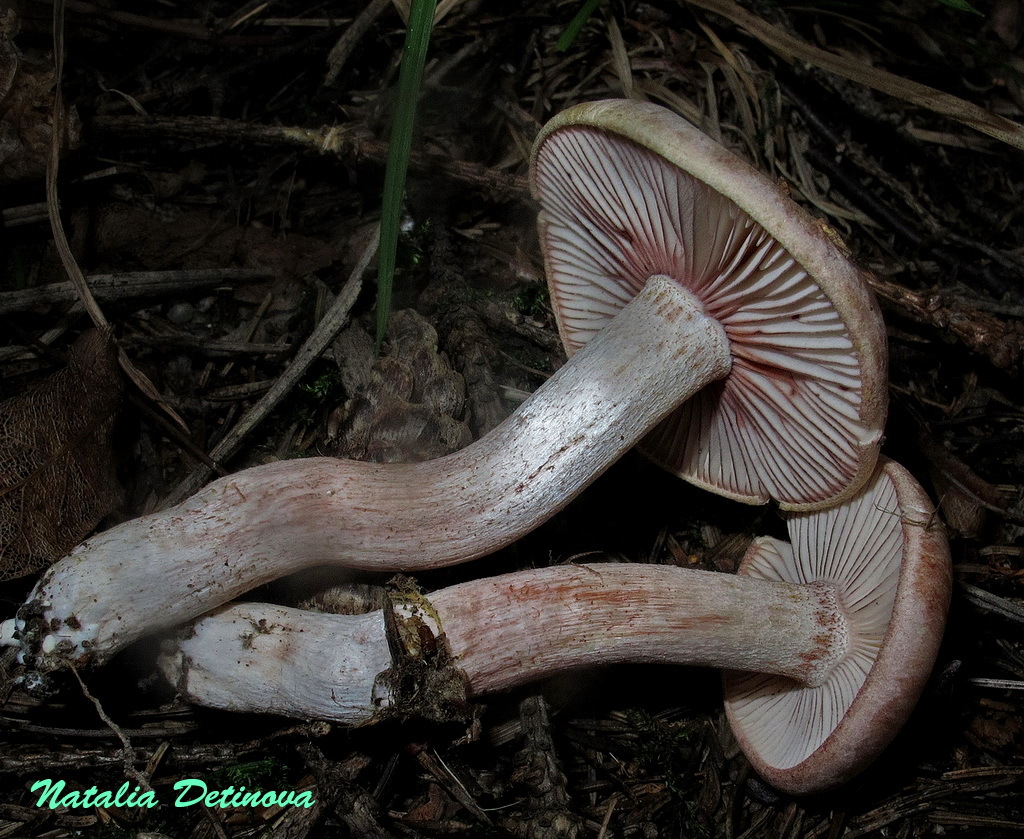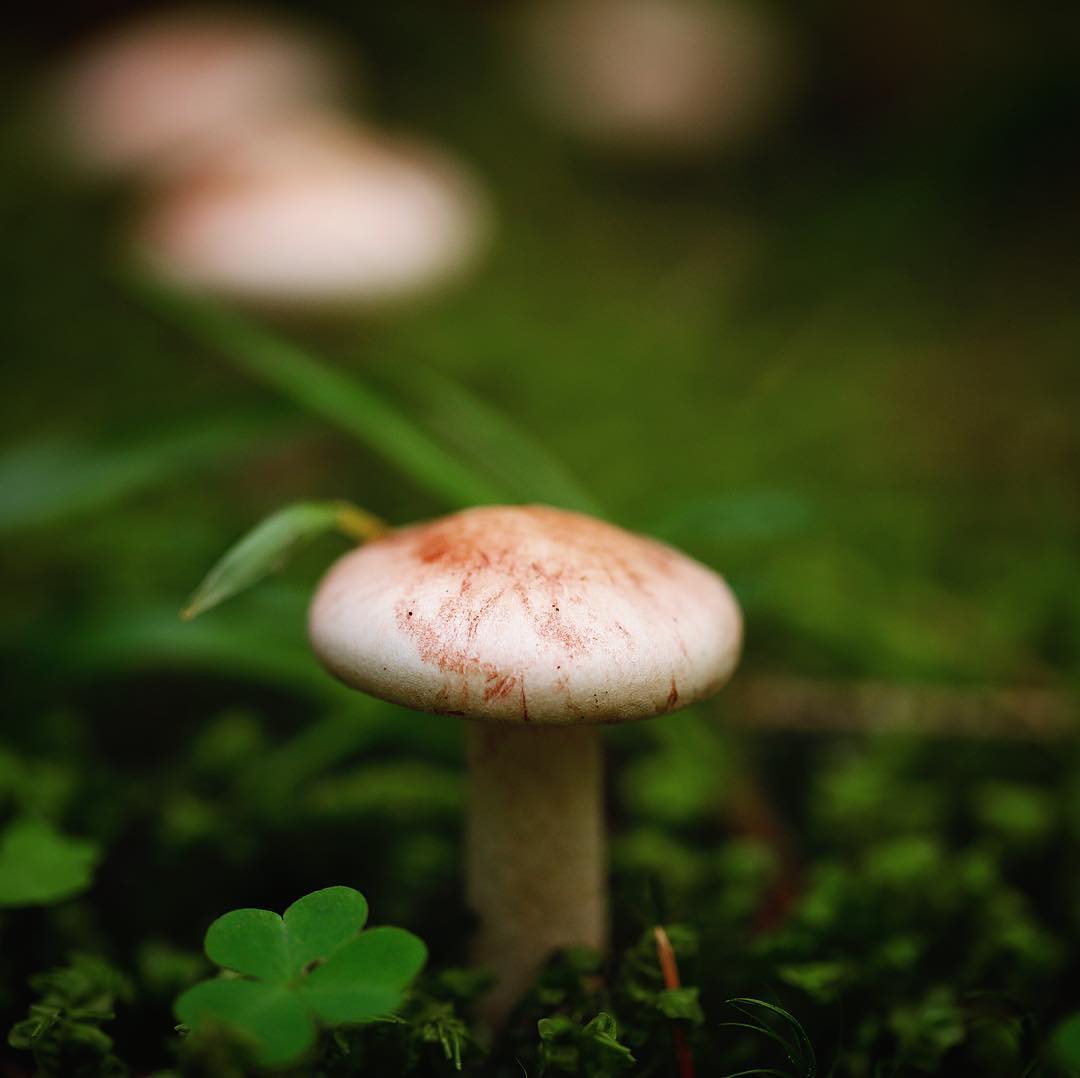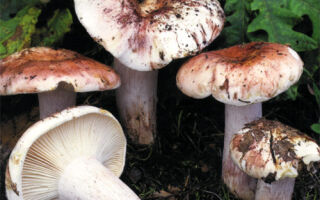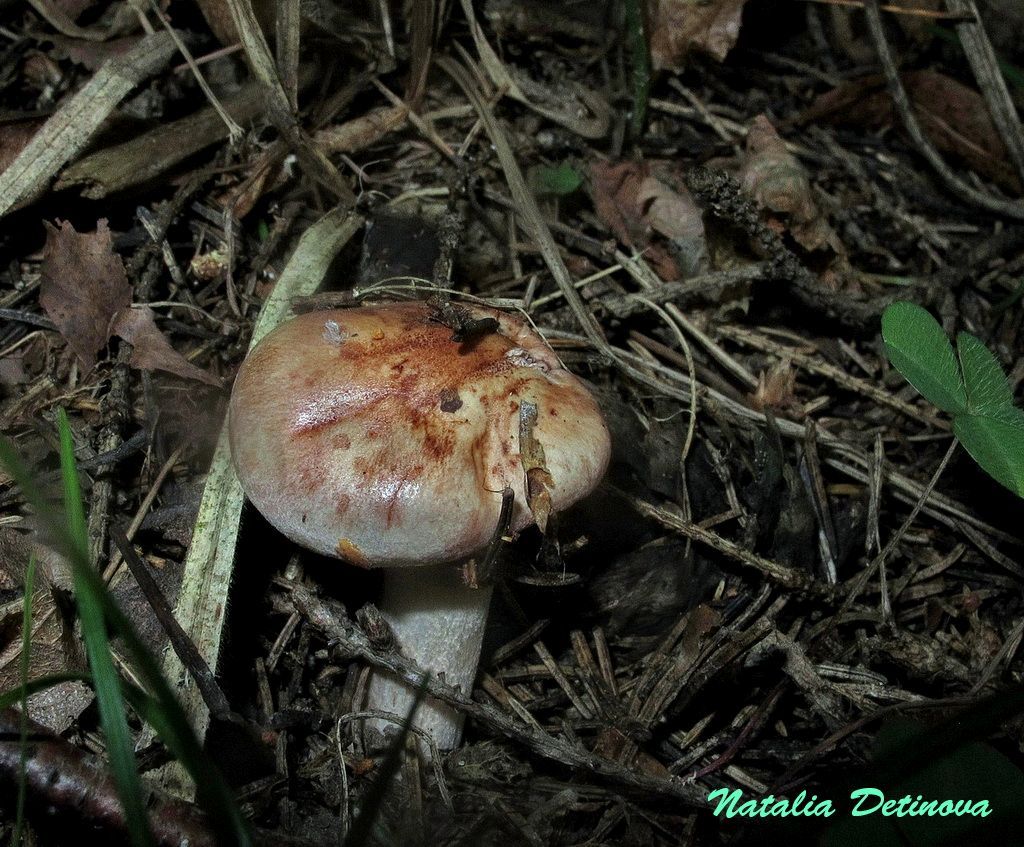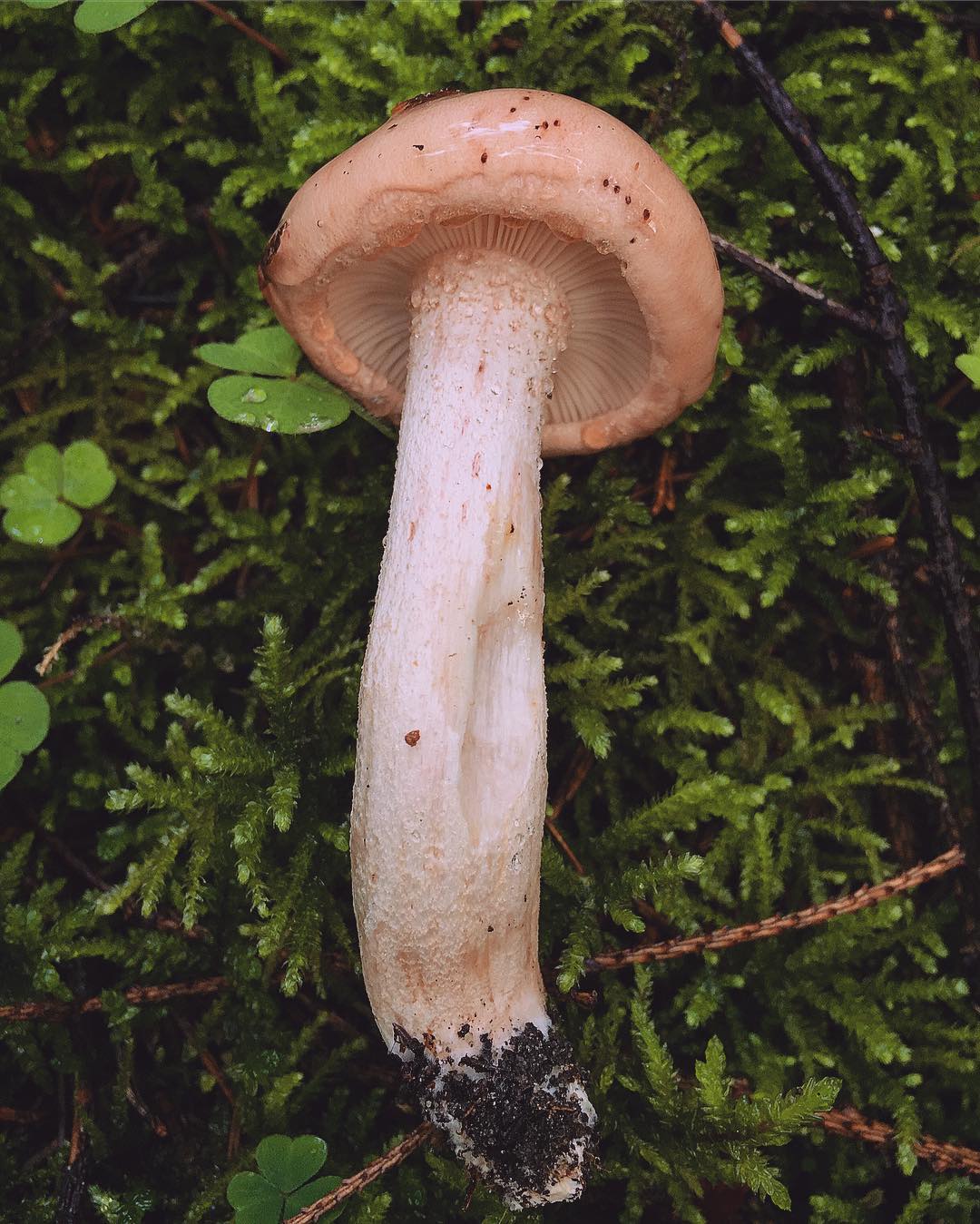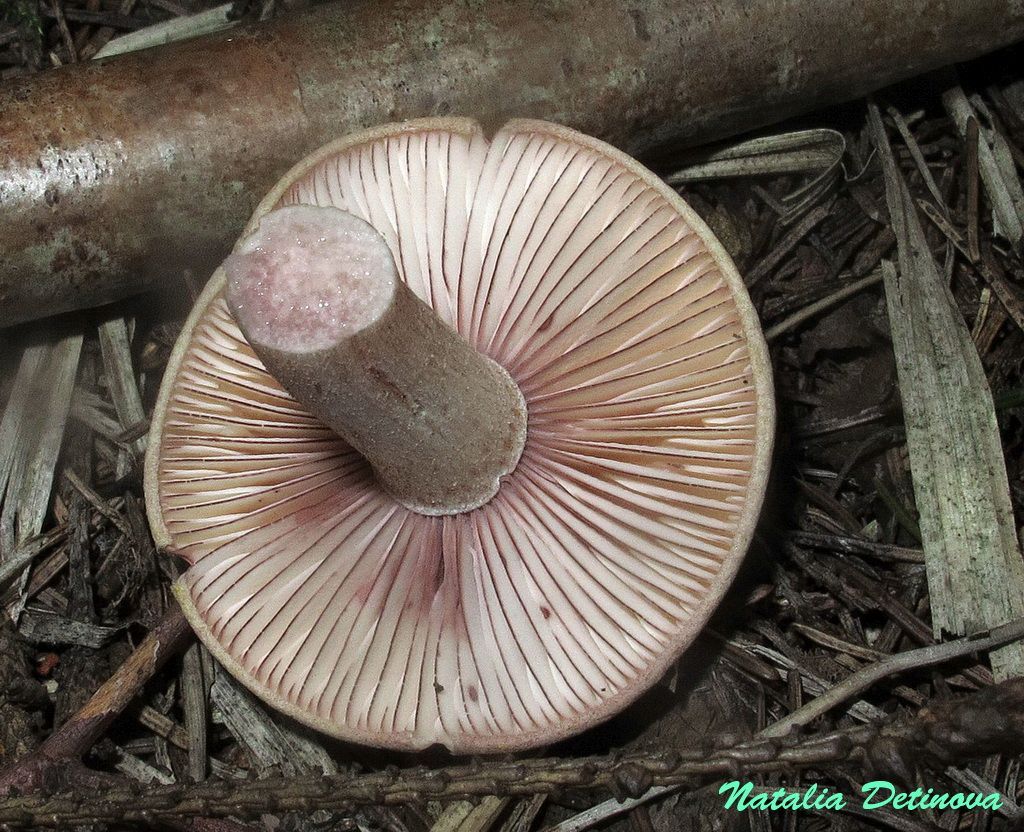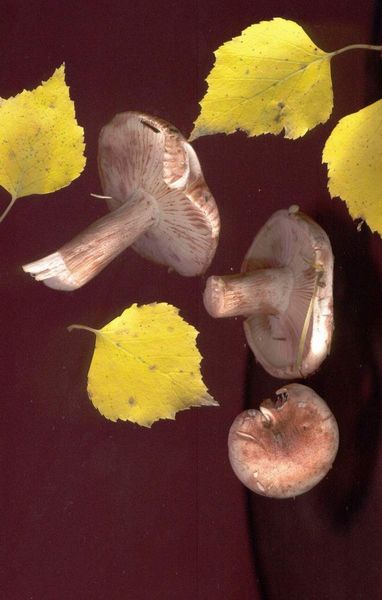Gigrofor golden edibility, where it grows, what it looks like, collection rules, photo
Gigrofor golden: is it possible to eat, description and photo
Golden Gigrofor is a lamellar mushroom of the Gigroforov family. This species grows in small groups, forming mycorrhiza with different trees. In other sources, it can be found under the name of the golden-toothed hygrophor. In scientific circles, it is listed as Hygrophorus chrysodon.
What does the golden hygrophor look like?
The fruiting body of this species is of the classical type. The hat initially has a convex bell-shaped shape with an edge concave downward. As it ripens, it straightens out, but a small tubercle remains in the center. The surface is smooth, sticky, covered with thin scales closer to the edge. In young specimens, the color of the upper part is whitish, but later it becomes golden yellow. The diameter of the cap reaches from 2 to 6 cm.
The pulp is watery, soft. It is characterized by a light shade and does not change when cut. The smell is mild, neutral.
On the reverse side of the cap there are rare wide plates descending to the pedicle. The hymenophore initially has a whitish tint, and then becomes yellow. The golden hygrophor has white elliptical spores with a smooth surface. Their size is 7.5-11 x 3.5-4.5 microns.
The leg is cylindrical, narrowed at the base, sometimes slightly curved. Its length reaches 5-6 cm, and its width is 1-2 cm. In young fruits, it is dense, and then a cavity appears. The surface is sticky, white, with a light fluff closer to the cap and yellow scales along the entire length.
Where does the golden hygrophor grow
This mushroom is common, but it grows singly or in small groups. Prefers conifers and deciduous forests with humus-rich soil. Forms mycorrhiza with oak, linden, pine. The fruiting period begins in mid-August and continues through the second decade of October inclusive.
The golden hygrophor is widespread in Europe and North America. On the territory of Russia, it is found everywhere.
Is it possible to eat a golden hygrophor
This mushroom is considered edible. But it does not possess high taste, therefore it belongs to the fourth category.
False doubles
At the initial stage of development, the gigrofor is golden in many ways similar to its relatives. Therefore, in order to avoid error, it is necessary to study the characteristic differences of twins.
- Fragrant gigrofor. It has a pronounced almond scent, and in rainy weather it can spread for several meters around. You can also distinguish it by the gray-yellow shade of the hat. This mushroom is considered conditionally edible and is characterized by a sweetish pulp taste. The official name is Hygrophorus agathosmus.
- Gigrofor is yellowish-white. The fruiting body is medium in size. The main color is white. A distinctive feature is that when rubbed, wax is felt on the fingers. The mushroom is edible, its official name is Hygrophorus eburneus.
Collection rules and use
Mushroom picking should be done with a sharp knife, cutting off the fruiting body at the base. This will prevent damage to the mycelium.
Before use, forest fruits must be cleaned of litter and soil particles. Then rinse the mushrooms thoroughly. It can be consumed fresh and processed.
Conclusion
Gigrofor golden belongs to the category of unpopular, but edible mushrooms. This is due to its poor fruiting, which makes harvesting difficult, and its neutral taste. Therefore, most mushroom pickers bypass it. Since during the fruiting period, more valuable species can be harvested.
Cooking recipes
Hygrophors can be fried, dried, baked, boiled. They are often added to salads, sauces, side dishes, soups, pickles, pies.
Cleaning
The cleansing process is simple.The mushrooms are washed under water, the remnants of dirt and foliage are removed, the damaged parts are cut off, and dried.
Cooking
The process takes 10 minutes. This procedure is necessary in order to get rid of possible bitterness. Peel the mushroom before cooking.
Pickling
For cooking you will need: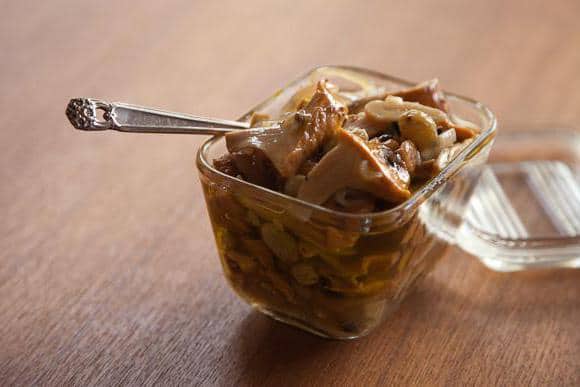
- prepared and boiled mushrooms - 2 kg;
- water - 1 l;
- vinegar 9% - 0.4 l;
- salt - 40 g;
- sugar - 10 g;
- bay leaf - 4 pcs.;
- allspice - 4 peas;
- cloves - 5 pieces.
How to cook?
- Sterilize 2-2.5 liter containers and lids.
- Pour salt, sugar, spices into heated water and dissolve, stirring. When boiling, do not reduce heat for 6 minutes.
- Add vinegar and cook for another 2 minutes over medium heat.
- Immerse the peeled mushrooms in the marinade and cook for a quarter of an hour.
- The final stage is to arrange in jars.
Freezing
Peeled mushrooms (do not cut into too small pieces) are boiled in salted water, allowed to drain and sealed in bags, removing the air. They do not need to be defrosted for use in food.
Frying
For fried hygrophors with potatoes and garlic, you will need: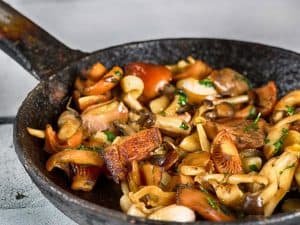
- mushrooms - 200 g;
- potatoes - 600 g;
- onions - 2 pcs.;
- vegetable oil - 90 g;
- garlic - 2 cloves, a sprig of thyme;
- salt to taste.
Step by step cooking
- Potatoes are fried until golden brown in vegetable oil.
- Spread mushrooms, onions, mix. After closing the lid, cook over low heat for 15 minutes.
- At the very end, add spices.
Salting hygrophor in oil
To prepare the dish you will need:
- mushrooms - 1 kg;
- garlic - half a head;
- allspice - 50 g;
- bay leaf - 8 pcs.;
- dill umbrellas - 3-4 pcs.;
- salt - 50 g;
- odorless sunflower oil.
Step by step cooking
- Mushrooms are boiled in water without adding spices, only slightly salting, for 20-25 minutes.
- Then they are laid out in a container with their caps down. Do this in layers with salt, pepper, dill and laurel leaves.
- Tamp and pour in oil, completely covering the level of the mushrooms.
- The brining process lasts at least 30 days. Store the workpieces in a cool place.
Drying
Lamellar mushrooms, such as milk mushrooms, hygrophors, russula, volushki, etc. are not dried due to the appearance of a specific bitter taste.
Preserving the hygrophor for the winter
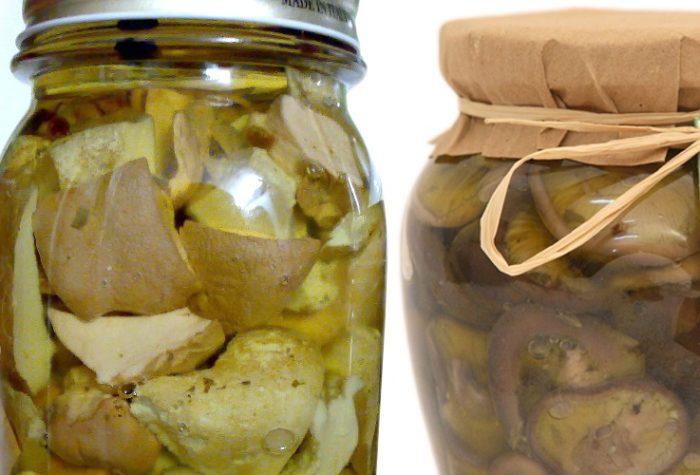 You will need:
You will need:
- hygrophors - 2 kg;
- water - 1 l;
- table vinegar, 9% - 80 ml;
- rock salt - 40 g;
- sugar - 30 g;
- black peppercorns - 20 pcs.;
- horseradish root - 1 pc .;
- fresh dill - 2 bunches;
- garlic - 3-5 cloves;
- black currant leaf - 3 pcs.
Step by step cooking
- Rinse the herbs, chop.
- Peel the garlic and horseradish root, cut into thin slices.
- All spices and herbs are placed on the bottom of the jars, then boiled mushrooms are laid out.
- For the marinade, salt, sugar and vinegar are poured into heated water, brought to a boil and cooked for 7 minutes.
- The mushrooms are poured with the resulting brine and closed with nylon lids.
In nature, the hygrophor is rare, but it is a valuable product for human health. The mushroom has a pleasant taste, it can be harvested for the winter and consumed fresh. Collect it in the forest or grow it on your own plot.
Hygrophor taste, benefits and harms
This type of mushroom boasts a rich composition. It includes amino acids, vitamins, plant proteins and minerals. Among the vitamins: PP, B9, B6, B5, B2, B1, choline.
Thanks to the individual combination of micro- and macroelements, the hygrophor is able to benefit the human body:
- selenium normalizes the thyroid gland, prevents the development of neoplasms, has a positive effect on vision;
- manganese supports the functions of the reproductive system, removes unnecessary fatty deposits from the liver;
- copper relieves inflammation, strengthens bones, stabilizes the digestive tract;
- phosphorus speeds up thought processes, normalizes acid-base balance;
- potassium has a positive effect on sleep, controls water balance, normalizes blood pressure and heart function;
- sodium has vasodilating properties;
- iodine increases physical activity;
- zinc prevents anemia, strengthens the walls of blood vessels;
- sulfur inhibits aging processes;
- calcium strengthens teeth, participates in muscle contraction.
 The mushroom also contains fiber, lysine, cysteine and animal proteins. It has a pleasant taste, goes well with cereals, potatoes, cheese, meat, vegetables and spices.
The mushroom also contains fiber, lysine, cysteine and animal proteins. It has a pleasant taste, goes well with cereals, potatoes, cheese, meat, vegetables and spices.
In addition to its benefits, the mushroom can also negatively affect health. You should not use it in the diet too often, since the following manifestations are possible:
- allergic reactions;
- hypervitaminosis, in which the skin condition worsens;
- chemical damage to cartilage tissue;
- frequent urination;
- cardiopalmus.
Growing a mushroom in the country and at home
To grow a hygrophor in the country, you will need a mycelium. It can be purchased in powder form from specialized stores. One package is designed for seeding 1 m2
Pay attention to the expiration date. The seeds are mixed with dry soil or sand and planted under a suitable tree
The soil must be prepared. To do this, remove a layer of earth up to 15 cm and loosen it. Pour the mixture with mycelium, evenly distributing it, onto the surface and finish with a layer of native forest or garden soil with humus. The planted plot of land needs to be watered abundantly (10 liters of water per 1 m2 of area).
You can sow mycelium all year round. Harvesting is possible up to 4 times - twice in spring and the same amount in autumn. Fertilize the soil once a year during the period when the mushrooms have finished their growth. This will keep yields high. This species can also be grown in indoor indoor conditions, like champignons.
Types of mushroom hygrophor
Fragrant, aromatic, or fragrant hygrophorus (Hygrophorus agathosmus)
An edible mushroom with a fleshy fruiting body. The hat is 4-8 cm in diameter, convex in shape, gradually becomes flat-convex, the edge is tucked up, the surface is sticky and slimy, especially at high humidity. The color of the cap is gray, yellowish brown or off-white, rarely with a green tint. The plates are rare, grow to the stem, white. The flesh is whitish or pale gray in color, soft, with a strong aroma reminiscent of bitter almonds, celery or anise, and a bland taste. The length of the leg is 4-10 cm, the thickness is 0.6-1.5 cm. The leg is central, cylindrical, dry or wet, the surface is not mucous. The color of the leg is white, gradually turning gray. Spores are white.
Grows from August to September in coniferous and mixed forests. Widespread in temperate climates.
Yellowish-white hygrophorus (Hygrophorus eburneus)
Edible mushroom, also known as ivory wax bonnet and cowboy handkerchief. Found in Europe, North America, North Africa.
The fruit body is white. In wet weather, the hat becomes covered with a thick layer of mucus. Feels like wax.
Early hygrophorus (Hygrophorus marzuolus)
A rare species, which is also found under the names of the hygrophor of March and snow mushroom. The diameter of the cap is 4-10 cm, the structure is thick, fleshy, the shape of the young mushroom is convex, flattens with age. The surface is curved, the edges are wavy. The skin is smooth, dry, slightly pubescent. In young mushrooms, the cap is light gray or whitish, in mature ones it is lead-gray or blackish with spots. The pulp is dense, white, turns gray with age. The aroma is weak, pleasant, the taste is not expressed. The leg is 3-8 cm long, 1.5-4 cm wide, cylindrical, curved, solid, thinning downwards. The color is whitish or gray, with a silvery tint. Spores are white.
Unlike other hygrophors, the species is very early, appears in March and grows until the beginning of May. It is found in coniferous and deciduous forests, often under beeches.
An edible mushroom used in soups and garnishes for meat dishes. Since the March hygrophor appears very early, it cannot be confused with other mushrooms, including poisonous ones.
Hygrophorus olive-white (Hygrophorus olivaceoalbus)
The diameter of the cap is 2-6 cm, the shape is hemispherical in young mushrooms, in old ones it is convex or flat, covered with a layer of mucus.The color of the cap is gray-brown or olive-brown, darker in the center, becomes lighter as it matures. The pulp is strong, white, yellow in the center, the pulp is fibrous in the stem. Aroma and taste are poorly expressed. The stem is 4-8.5 cm long and 0.4-1.0 cm thick, central, cylindrical or fusiform, olive-brown color. Spores are white.
An edible mushroom that is eaten fresh.
It grows from August to November in coniferous and mixed forests next to spruce. Widely distributed in Eurasia.
Gigrofor russula or russula (Hygrophorus russula)
A fleshy edible mushroom that grows in the deciduous forests of the Northern Hemisphere.
The diameter of the cap is 5-12 cm, the shape is hemispherical, gradually becoming convex, flattened, the edge is turned up. The surface is smooth, in wet weather it becomes sticky-mucous, in young mushrooms it is whitish or pinkish in color, with pink spots, then it becomes pink-red and in a mature mushroom - wine-red. The pulp is dense, white, pinkish on the cut, the smell is weak, flour, the taste is not pronounced. The leg is 6-8 cm long, 1-2.5 cm thick, central, tapering downward, clavate or fusiform, white with pinkish-brown spots. Spores are white.
Edible mushroom, used fresh, pickled or salted. It is considered the best in taste of all species of the family.
It grows from August to November in deciduous and mixed forests, next to an oak tree.
Description of the reddening hygrophor
This mushroom has a classic appearance - it has a rather long stem and a domed cap. In fully ripe specimens, the caps gradually open. The surface of the fruiting body is pinkish-white with small yellow spots.

Places of distribution of reddening hygrophors
Reddening hygrophors grow in coniferous or mixed forests. These mushrooms bear fruit in August-September. Hygrophors coexist with pines or spruces. Therefore, they are most often found under these trees.
Evaluation of the taste of reddening hygrophors
Reddish hygrophors are eaten by many. But they do not cause much culinary delight, since they do not have an expressive smell and special taste. These mushrooms are good as a complement to other types of mushrooms.

Relatives of the blushing hygrophors
The reddening hygrophor is outwardly most similar to the russula hygrophor. Gigrofor russula is practically the same, but has a larger size. Gigrofor russula is an edible mushroom. His hat is strong, fleshy, its shape is initially convex, and with age it becomes prostrate, sometimes a tubercle remains in the center. The skin of the cap is scaly. The leg is cylindrical, very strong. The pulp is white, in the air it turns red.
Russula hygrophors grow in deciduous forests. Find them under the oak trees. They settle in small groups. They grow in hilly and mountainous areas. Fruiting from summer to autumn.
The poetic hygrophor also looks like a reddening hygrophor, and this is also an edible mushroom. At first, the shape of the cap of the poetic hygrophor is spherical, and then it becomes prostrate. The skin is silky and shiny. The color of the cap can be light pink or whitish with a light yellow tint. The leg is dense and strong, white. The pulp of the poetic hygrophor has a jasmine aroma.

Poetic hygrophors grow in deciduous forests. They settle in groups, in mountainous terrain, under beeches. Fruiting from summer to autumn. These are delicious mushrooms that can be cooked in a variety of ways and preserved.
Gigrofor maiden is a conditionally edible mushroom. His hat is at first convex, and as it grows, it straightens out. There is often a tubercle on the surface of the cap. The leg is cylindrical, rather thin, but at the same time dense. The fruit body is white, sometimes a yellowish tint appears. If reddish spots appear on the girl's hygrophor, this means that mold has curled on the skin.
Maiden hygrophors grow in clearings, meadows, in mountainous and flat areas. They settle in numerous groups. Maiden's hygrophors bear fruit from summer to autumn.Although these are edible mushrooms, they have no special value.



